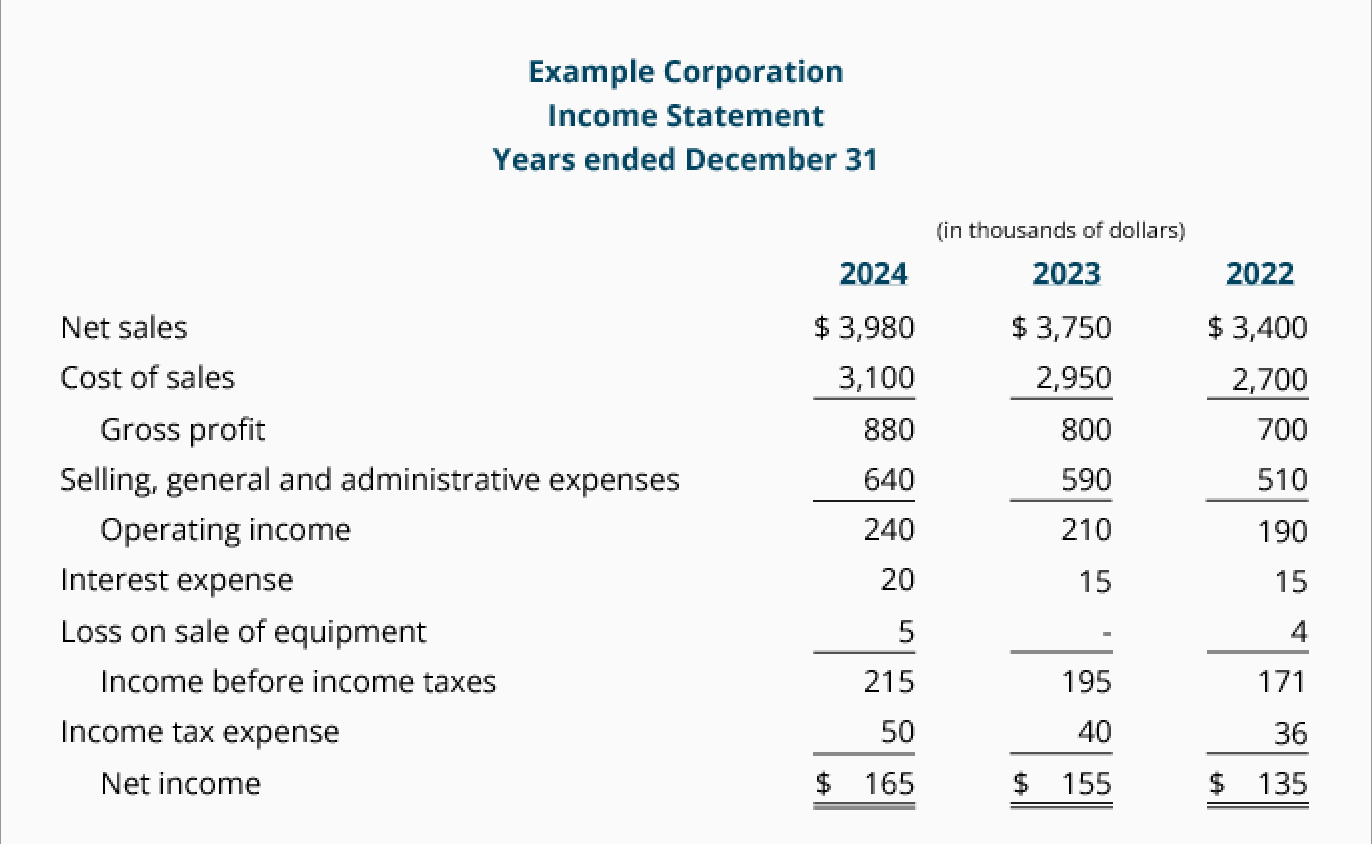
A Simple Guide to Understanding a Company’s Financial Health
Feb 23, 2025Hello Stoic Investors,
Today, I'm excited to share a key concept with you—one that might not be strictly essential but can help you become an even better investor!
If you're just starting your investing journey, you’ve probably heard terms like revenue, net income, and profit margins regarding a company.
These terms refer to the Income Statement, a key financial document of a company.
But what does it really reveal about the company's performance, and why should you care?
Understanding the Income Statement will give you an extra edge in analyzing companies and making informed decisions!
What Is an Income Statement?
An income statement, also called a profit and loss (P&L) statement, is a financial report that shows a company’s revenues, expenses, and profits (or losses) over a specific period (quarterly or annually).
It helps investors see how well a company is generating profits from its operations.
It can differ between countries due to accounting standards, but in general, it looks more or less like this:

Think of it as a company’s financial report card—it tells you if the business is making money or burning cash.
You can find these reports on a company's Investor Relations page, in regulatory filings (like Companies House for UK companies or equivalents in other countries), on financial platforms such as Yahoo Finance or Bloomberg, and in various investing apps.
How to Read an Income Statement
1. Net Sales:
The total money earned from selling products, after subtracting returns, discounts, or allowances.
2. Cost of Goods Sold (COGS):
The cost to make or buy the products sold, including raw materials and labor.
3. Gross Income:
The money left after subtracting the cost of goods sold from total sales. It shows the profit from sales before other expenses.
4. Selling, General, and Administrative Expenses (SG&A):
Everyday costs to run the business, like salaries, rent, and utilities.
5. Operating Income:
The profit from the company’s main activities, calculated by subtracting SG&A from gross income.
6. Interest Expense:
The money paid in interest on loans or other debts.
7. Loss on Sale of Equipment:
The loss incurred when equipment is sold for less than its original cost.
8. Income Before Taxes:
The profit before taxes, found by subtracting interest expense and equipment sale losses from operating income.
9. Income Taxes:
The amount of money paid to the government based on the profit.
10. Net Income:
The final profit after all expenses, including taxes, have been deducted.
Most income statements will follow this structure.
Even if they have more fields, the logic is the same.
Why Does This Matter for Investing?
If you invest in individual stocks, understanding income statements helps you spot profitable businesses.
Companies that consistently make a profit are more likely to grow and reward investors.
By tracking revenue and expenses, you can identify businesses that are expanding and managing costs efficiently.
Comparing income statements also helps you pick the best stocks in an industry.
Some companies make more money but spend too much, while others manage their costs well.
Choosing a financially strong company can improve your investment results.
On the other hand, if a company’s revenue is falling while expenses are rising, it could be in trouble.
Spotting these warning signs early can help you avoid bad investments and protect your money.
Even if you invest in ETFs, income statements still matter.
Since ETFs hold multiple companies, the financial health of those companies affects the ETF’s performance.
Looking at the profitability and revenue growth of an ETF’s top holdings helps you choose a fund that aligns with your goals.
Growth ETFs focus on companies increasing profits, while value ETFs include businesses with steady earnings!
So, note down these 3 key-points and start investing today:
1. An income statement reveals a company's profitability: It shows revenue, expenses, and net income, helping you assess financial health.
2. Comparing income statements helps pick stronger investments: Evaluating trends and margins across companies allows you to make better choices.
3. Even ETF investors benefit from income statements: The financial strength of an ETF’s holdings influences overall performance.





